Improving the ROI of market research
One of the major Belgian utility providers consulted 4P square for an interim management job in their marketing intelligence department. Shortly after the start of the assignment other challenges appeared, one of which was the optimization of the existing Brand and Communication tracker, which ran on a quarterly basis and provided performance data with regard to brand awareness and positioning. The marketing intelligence manager nor the internal customers for the research felt 100% comfortable with the existing brand tracker, so an audit was carried out and recommendations made and implemented to improve output of the research all while saving on the research budget.
Stepwise approach
Step 1: Audit
During an audit we evaluated the existing Brand and Communication tracker and talked with the key stakeholders of this survey.
Step 2: Recommendations
The audit of the existing Brand and Communication tracker resulted in a list of recommendations for optimizations on several aspects:
- Methodology: continuous online survey in stead of 4 punctual field waves per year (increasing the representativeness of measuring times all over the year)
- Sample: big enough to draw relevant conclusions, even on a monthly base (play short on the ball in a fast changing market)
- Questionnaire:
- measuring need to knows: KPIs based on the Brand Funnel model + churn + brand image + customer segments
- removing nice to knows : e.g. advertising post-test questions
- optimizing response scales: more consistent (reduce the many different scales and use more logical scales)
- Analysis: in depth analysis on own brand and of main competitive brands, segments, socio-demo’s, …
testing on statistic significance of differences and evolutions - Reporting:
- report timing aligned with timing of internal business reporting/overviews
- report structure following the Brand Funnel (logic for marketing people)
- all tables and graphs: title, sample base, source, field time and significance of data
- not only facts but also findings, conclusions and recommendations
Together with the key stakeholders we discussed these recommendations, refined them and reached a final agreement.
Step 3: Request for proposal
We wrote a very pushed request for proposal with also an indication of the number of questions, the nature of questions and answering scales to be used, the type of analyses, the breaks we needed for analyzing, the type of tables and graphs we needed for reporting, the reporting formats with examples (full report, KPI report, Excel sheets, SPSS). As a result there was a reduction in out of pocket budget.
The market research agencies were challenged and invited to react on our request, to give suggestions for optimizations, for supplementary analyses and for reporting (tables and graphs).
In fact we took a substantial control of the process and the execution and also we were open for added value input of the market research agencies.
Step 4: Screening and selection of the market research agency
A short list of 4 market research agencies received the request for proposal. Screening and selection was based on objective criteria (also stated in the request for proposal. 2 research agencies were invited at the offices for an assessment. Finally we could make the best choice. The other research agencies were contacted by phone for a debrief.
Step 5: Implementation
Ongoing.
More for less money…
A side effect of the audit resulted in removing several post-test questions (except for TOM, spontaneous and aided communication awareness) from the Brand tracker. We reallocated this budget to concept and campaign pre-testing. If the marketing budget is limited and one has to choose, than it’s more actionable and productive to invest in the development (making the best possible campaigns) then in post-testing. We would do both if enough budget ere available, of course. In the end we did better, and for less money!
Key Succes factors
- Do what you are asked for but keep your eyes and ears open in order to proactively search for optimizations; don’t take things for granted, dare to go out of the box (if permission granted) and give your stakeholders more than they expected
- Listen to the needs of the stakeholders and challenge them by probing on decisions and actions they want to take based on market research, so concentrate on KPIs, the needs to know
- Instead of jumping in generating a lot of questions to be asked start with a framework (in this case the Brand Funnel)
- Be the manager and owner of the research process
- Strengthen the bridge between marketing and market research


